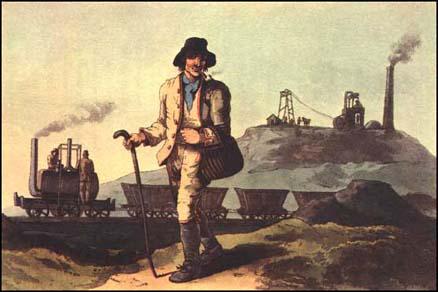John Blenkinsop
John Blenkinsop was the manager of Middleton Colliery. Blenkinsop wanted to find a way of reducing the cost of transporting coal to the nearby town of Leeds. In 1811 Blenkinsop joined forces with Matthew Murray, an engineer from Leeds to produce a locomotive for the colliery.
Blenkinsop wanted a locomotive that could be used to transport coal from Middleton Colliery to Leeds. Blenkinsop and Murray rejected the idea that a steam locomotive with smooth wheels on a smooth rail would have sufficient adhesion to propel itself and a load. They therefore experimented with producing a rack railway.

The Salamanca (named after a battle in the Peninsular War) locomotive, with its cog-toothed driving wheels, first appeared in public on 24th June, 1812. The locomotive had two vertical cylinders within the top of the boiler, and the pistons drove the rack wheels through rods and pinions. The locomotive weighed 5 tons and on a level track was capable of hauling a load of 90 tons at 4 mph. Blenkinsop's locomotive was a great success and with Murray's help he produced three more. A local artist, George Walker, produced the first ever painting of a locomotive when he visited Middleton Colliery in 1814.
The Blenkinsop locomotives were fairly expensive to use and heavy wear took place between the driving gear wheel and the horizontal rack. Despite these problems, the four Blenkinsop locomotives were used at Middleton Colliery until the mid 1830s.
Primary Sources
(1) Samuel Smiles, Life of George Stephenson (1875)
Mr Blenkinsop of Leeds took out a patent for a racked or tooth-rail laid along one side of the road, into which the toothed-wheel of his locomotive worked as pinions work into a rack. The engine had two cylinders, instead of one as in Trevithick's engine. The invention of the double cylinder was due to Matthew Murray of Leeds, one of the best mechanical engineers of his time.
